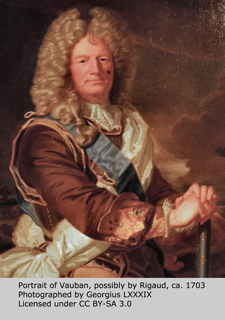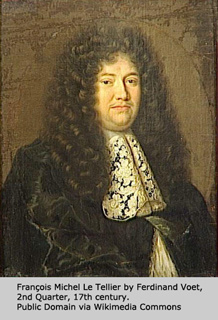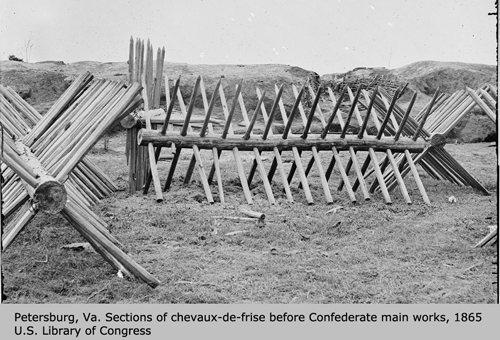 French military engineering genius, Sébastien Le Prestre, Seigneur de Vauban (Sebastian the Swift, Lord of Vauban) came up with the long-sought breakthrough. His baïonnette à douille (socket bayonet) was simple; and enabled the musket to be both loaded and fired while in place. An elegant solution, it was not without its teething troubles.
French military engineering genius, Sébastien Le Prestre, Seigneur de Vauban (Sebastian the Swift, Lord of Vauban) came up with the long-sought breakthrough. His baïonnette à douille (socket bayonet) was simple; and enabled the musket to be both loaded and fired while in place. An elegant solution, it was not without its teething troubles.
In Art de la Guerre, Jacques François Chastanet of Puysegur describes an early, less than successful, demonstration of the socket bayonet:
“During the war of 1688, one proposed to the King to discard pikes and give pikemen muskets. He made a demonstration of bayonets with sockets on the muskets of a regiment. The bayonets had not been made with the muskets, which were of different sizes, and did not fit firmly. In the presence of his majesty, several bayonets were made to fall off while withdrawing and others when the bullet was leaving the muzzle, so they were rejected. Shortly afterwards, nations with which we were at war discarded pikes for muskets with bayonets, while we were obliged to use pikes.” [View an image of this passage from Art de la Guerre.]
 However, it did not take long to remedy these faults. Vauban pressed his case with the French Secretary of State for War, François Michel le Tellier, Marquis de Louvois (Nobleman of Louvois), who favored a competing alternative, the chevaux de frise. In his 1879 biography of Vauban, Histoire de Vauban, Georges Michel writes of a spirited exchange of letters between Louvois and Vauban.
However, it did not take long to remedy these faults. Vauban pressed his case with the French Secretary of State for War, François Michel le Tellier, Marquis de Louvois (Nobleman of Louvois), who favored a competing alternative, the chevaux de frise. In his 1879 biography of Vauban, Histoire de Vauban, Georges Michel writes of a spirited exchange of letters between Louvois and Vauban.
"The substitution of the pike with the bayonet was the subject of a fight which lasted twenty-five years. Since the use of the gunpowder, the pike hardly had a reason to be. Fourteen feet long, difficult to handle, in battle this heavy weapon immobilized two thirds of the most vigorous men of the company."
Louvois had written Vauban that:
"On this point, as on that of the reform of the musket, the foreigners had preceded us. The Germans had given up the pike. Officers who made the countryside of Hungary this year, observed infantry of the Emperor had no pikes. In each battalion of four or five hundred men, the soldiers carry chevaux-de-frise with them, which they put in front of the face of the battalion when they are in the presence of the enemy. This infantry of the Emperor, on the occasions which arose in this countryside, and particularly in the affair at Esselt, were the rear-guard of all the army. Without capturing the Turkish cavalry, which coming three and four thousand strong on the last battalions, the aforementioned battalions posed their chevaux-de-frise such as to make a half-turn on the right. After which, the Turkish cavalry was obliged to withdraw under fire, and the infantry continued to go and was withdrawn without meeting any failure. I request from you, what you think on this use?"
Vauban answered that:
"The chevaux-de-frise were difficult to handle and was of questionable utility. Vauban proposed to Louvois to adapt to the musket or rifle, a bayonet of which a socket would encircle the muzzle of the gun and would leave the musket perfectly free for shooting." [View an image of this exchange from Michel's book.]
 Chevaux-de-frise (Frisian horses) were pointed stakes which musketeers placed in front of their formations to keep cavalry at bay. The name was a play on words, to describe the Frisians’ use of obstacles to counter cavalry, since they had little cavalry of their own. While this improved firepower, it was unwieldy and immobile. Although not favored for mobile infantry, chevaux-de-frise continued in use for static defense, until the advent of barbed wire.
Chevaux-de-frise (Frisian horses) were pointed stakes which musketeers placed in front of their formations to keep cavalry at bay. The name was a play on words, to describe the Frisians’ use of obstacles to counter cavalry, since they had little cavalry of their own. While this improved firepower, it was unwieldy and immobile. Although not favored for mobile infantry, chevaux-de-frise continued in use for static defense, until the advent of barbed wire.
Next: 1704—The Bayonet Supercedes the Pike
Back: 1680s—The Military Plug Bayonet
Return to History of the Bayonet Index
© Ralph E. Cobb 2009 All Rights Reserved



